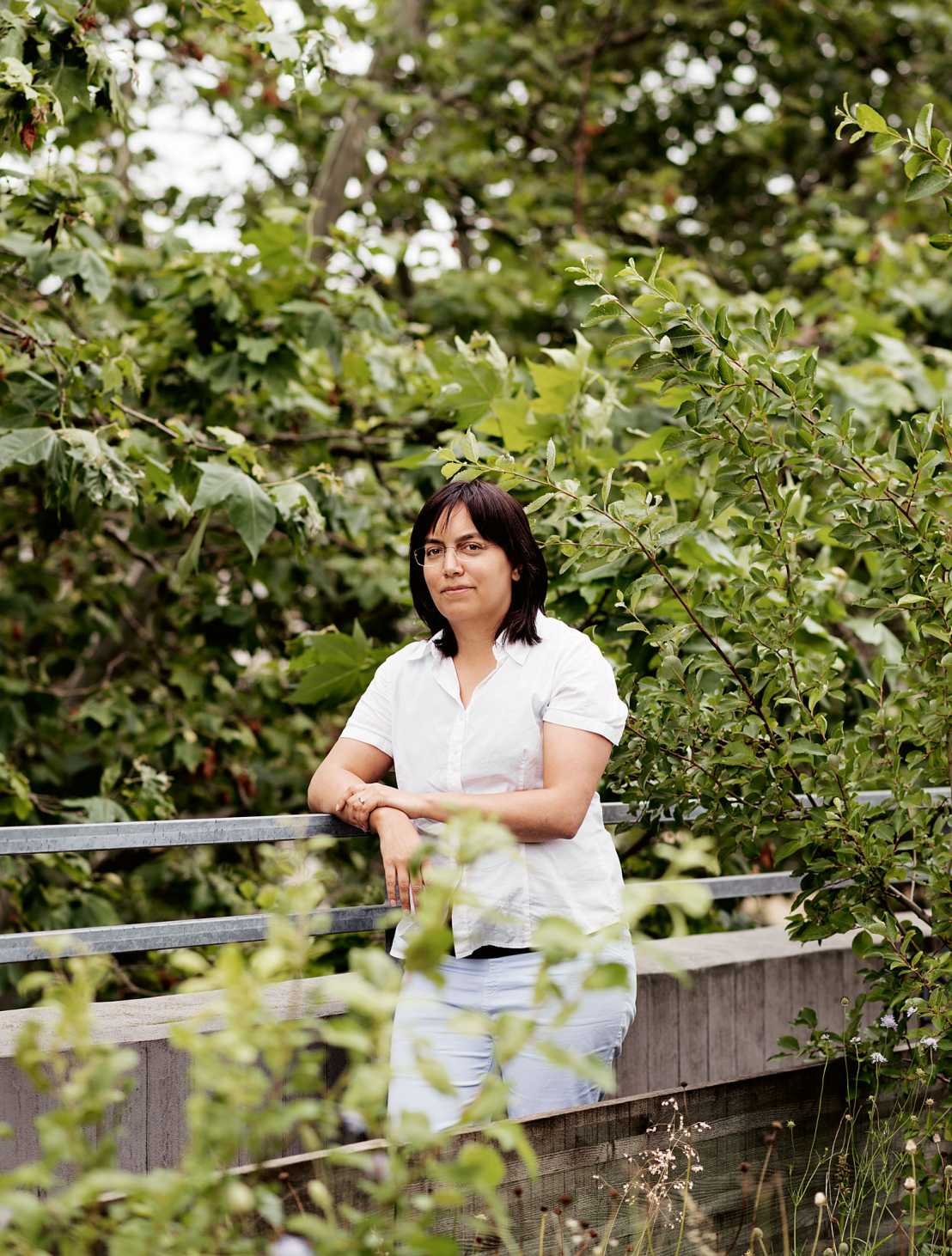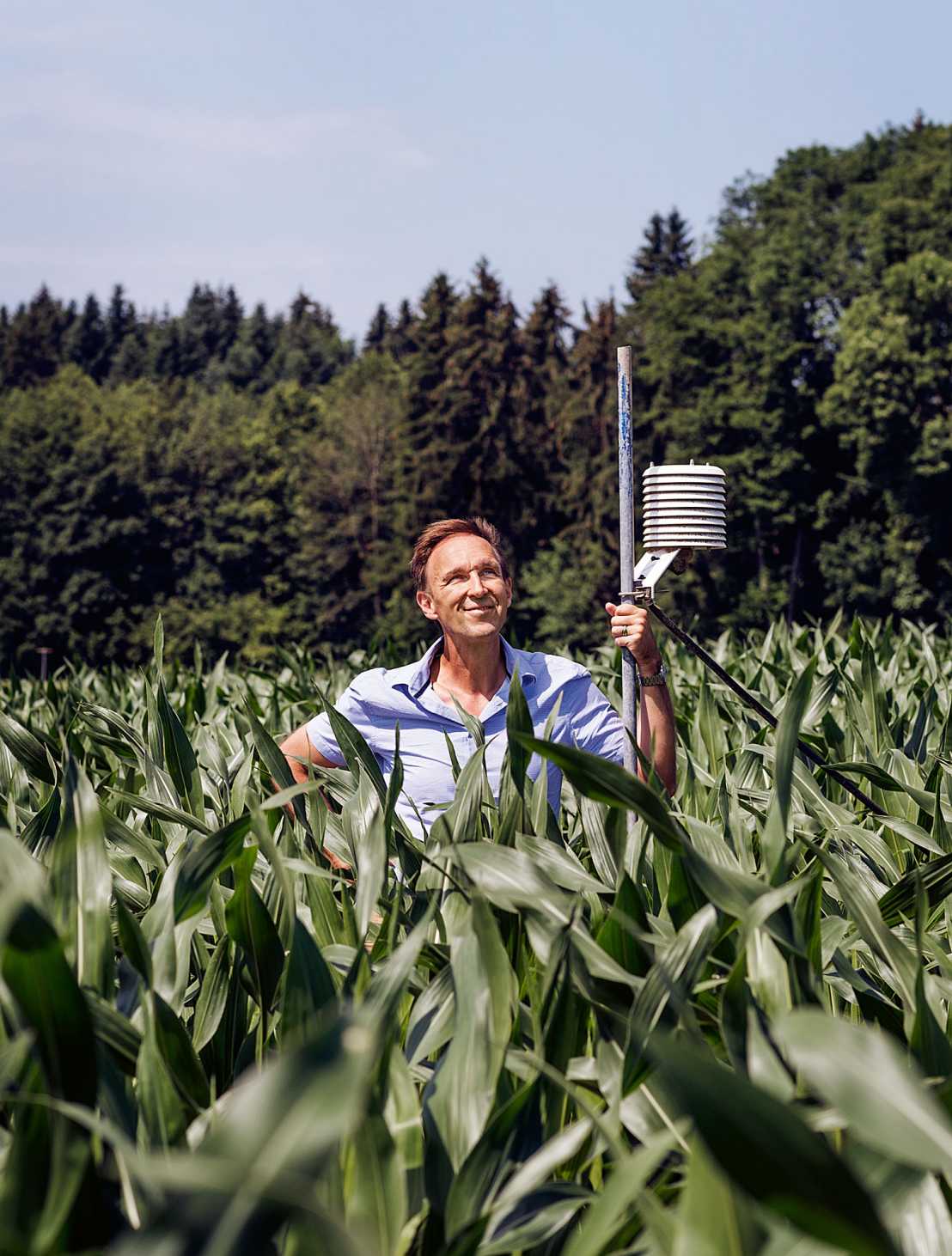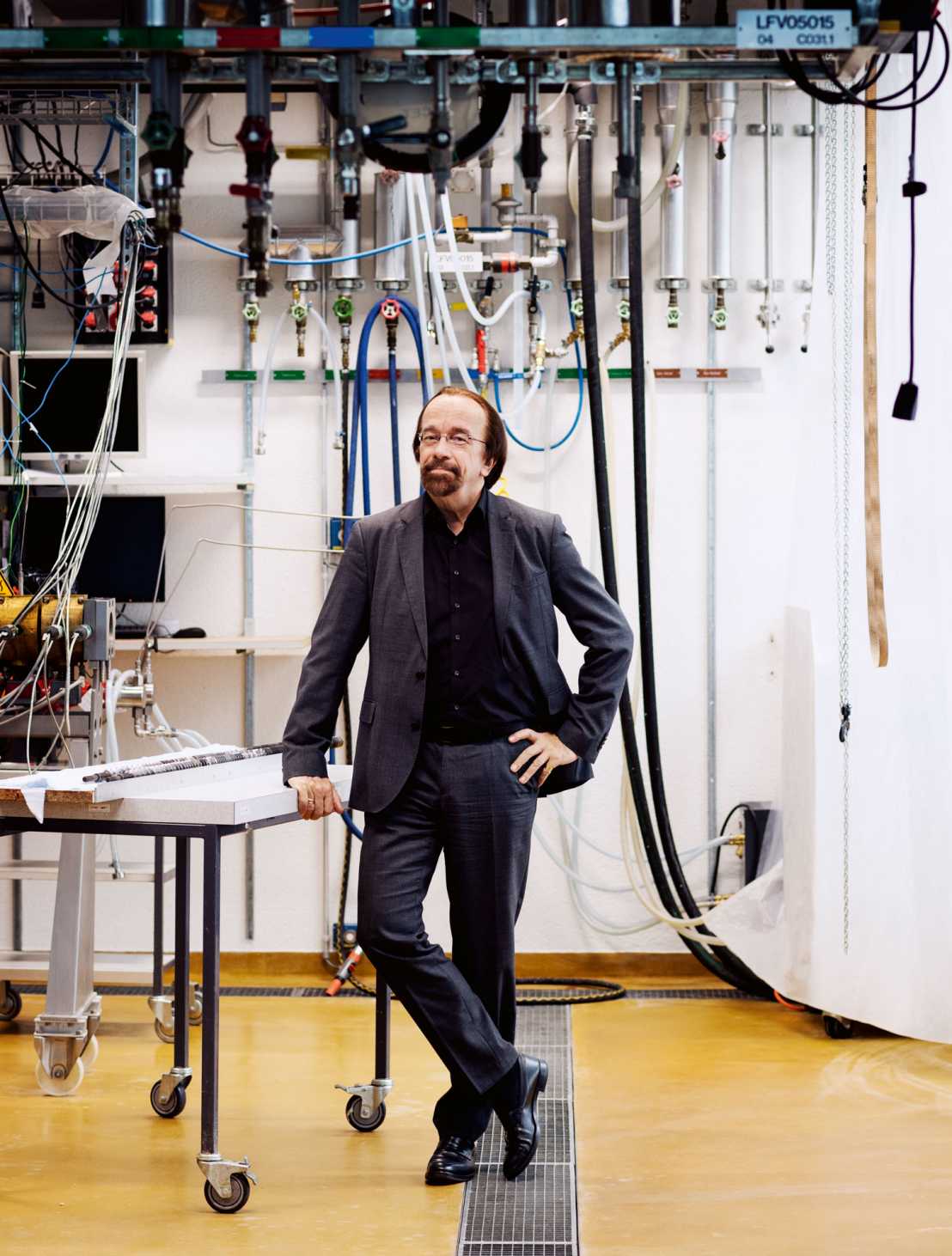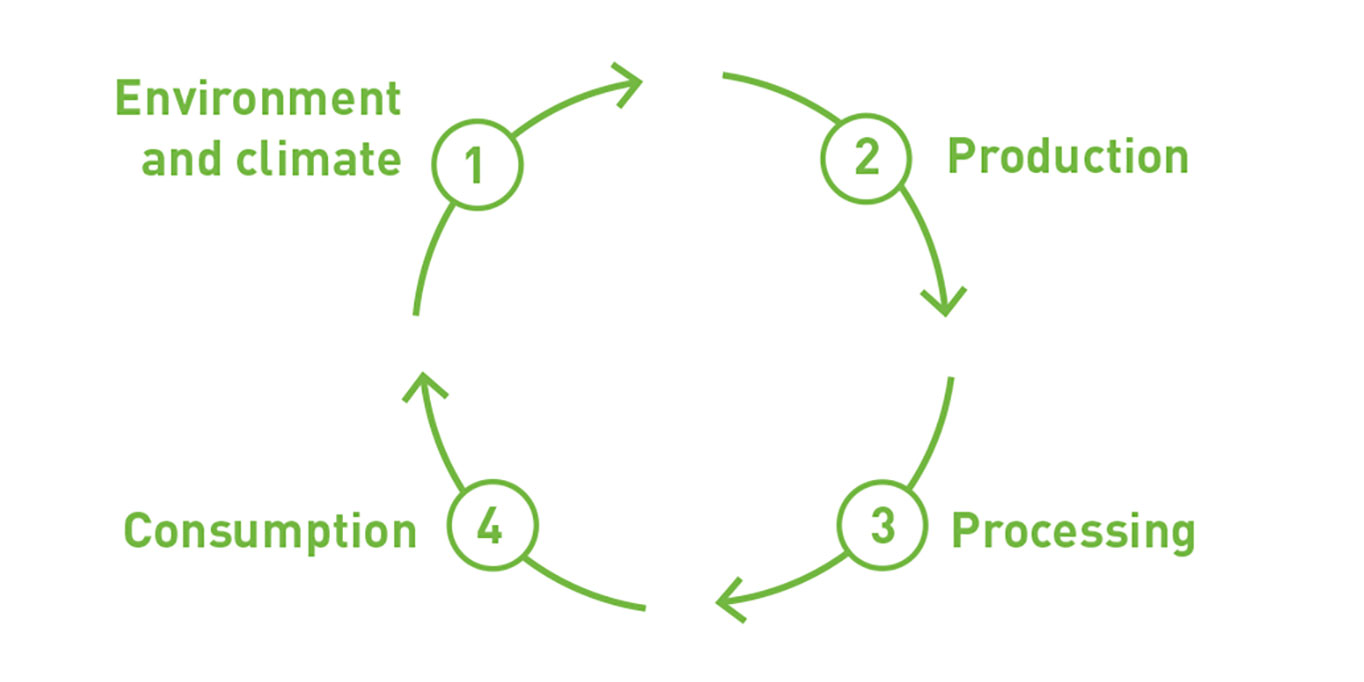Smart food
Climate change, global population growth and biodiversity loss are a threat to our food system. Four ETH researchers know how to produce, process and consume food more sustainably.
Environment and climate

“Food, climate and the environment are closely interlinked. Agriculture, for example, is heavily affected by climate change, but also emits large amounts of CO2.
This situation poses significant challenges for food production. Earth has already warmed by an average of one degree Celsius – and extreme heat events are on the rise worldwide. Heavy rainfall has become more frequent in many areas, while the risk of drought is increasing in some of the world’s most important agricultural regions. Even Switzerland is experiencing hotter, drier summers that put agriculture at risk. Moreover, a rapidly warming climate threatens biodiversity. And decreasing species diversity has a negative impact on natural resources such as fertile soils, clean water and insect pollinators, which form the basis of our food system.
Agriculture, forestry and similar forms of land use account for a net total of around 25 percent of global greenhouse gas emissions. Deforestation, artificial fertilisers, tillage and livestock production all play a part in this process. Emissions could be greatly reduced by adopting alternative soil cultivation practices such as no-till farming and, in particular, by switching to more vegetable-based rather than meat-based diets.”
Production

“We need to produce our food more sustainably. In my view, that means putting a greater focus on eco-friendly food to ensure we maintain key elements of life – such as biodiversity – for the long term. But food production methods also need to be economically viable and socially acceptable. That requires all sorts of adjustments to be made to different cultivation systems, products and farming regions – there’s certainly no one-size-fits-all solution!
There are, however, plenty of signs that we are heading in the right direction. The growing impact of digitalisation – combined with advances in robotics and biotechnology – holds the potential to make agriculture more sustainable and conducive to life. Sensors and algorithms can turn agricultural data into a useful resource. Autonomous drones and robots can help deliver precisely calculated doses of fertiliser, crop protection products and irrigation based on the current state of vegetation. And plant breeding can boost disease resistance and improve crops’ stress tolerance. Smart technology is the best way forward for the environment – but only if everyone is on board. People need to demonstrate a clear willingness to promote biodiversity and tackle climate change. With a more eco-friendly, transparent approach and prudent use of available data, we can boost consumer confidence in agriculture.”
Processing

“Nowadays, the food we eat can be processed and monitored at every stage of the value chain, from agricultural production to the biological uptake of nutrients in the human digestive system. Key steps include the separation and cleaning of raw materials, like the removal of mould-infected grains during harvesting; tailoring, preserving and packaging in industrial fabrication; as well as steps required to prepare foodstuffs for consumption in restaurant or catering facilities and homes.
The ultimate objective is global food security. That means securing access to safe, healthy and nutritious food for up to ten billion people in 2050. In environmental terms, we will then obviously no longer be able to afford inefficiencies such as food waste or the luxury of daily meat consumption.
New food processing technologies will help in the quest for alternative, more sustainable means of satisfying the growing demand for meat – for example with plant-based foods that are rich in proteins, fibres and micronutrients while appetising enough to persuade people to make the switch from meat. Ideally, we will also make use of high-quality components that arise as byproducts during the processing of other foods.”
Consumption

“Humans are omnivores, and cultural norms dictate what’s on the menu. Most consumers are conservative when it comes to food choices. It takes time for new foods to gain acceptance, especially when it comes to replacing meat with alternative sources of protein.
As a rule, meat is less eco-friendly than plant-based proteins. Yet demand for meat, in particular, will continue to grow due to population growth in developing countries. Meat consumption may have plateaued in Europe and North America, but it is still much higher than in developing countries. As soon as income rises in those countries, people will also start eating more meat.
Most consumers struggle to assess the environmental impact of different foods correctly. They tend to overestimate the impact of organic versus conventional food production, and underestimate the impact of animal proteins. For example, many people believe that conventional tofu is significantly worse for the environment than organic beef. That’s why it’s so important to make consumers more aware of the consequences of their food choices. Reducing our environmental footprint requires not just motivation, but also a full understanding of the facts.”
This text has been published in the current issue of the Globe magazine.

